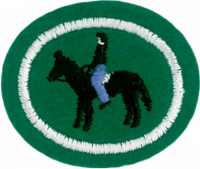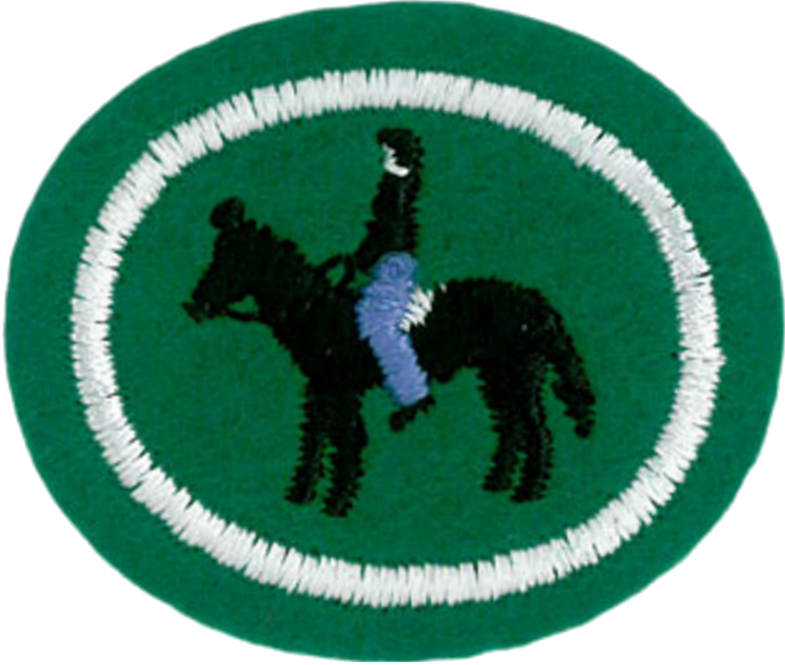Difference between revisions of "AY Honors/Horsemanship/Requirements/en"
(Updating to match new version of source page) |
(Updating to match new version of source page) |
||
| Line 1: | Line 1: | ||
{{HonorSubpage}} | {{HonorSubpage}} | ||
| − | <section begin=Body /> | + | <section begin=Body /> |
<b>Note: <section begin=reqNote /><noinclude></noinclude>All requirements should be completed in a safe environment with a gentle horse. | <b>Note: <section begin=reqNote /><noinclude></noinclude>All requirements should be completed in a safe environment with a gentle horse. | ||
Latest revision as of 21:34, 1 January 2023
Note: All requirements should be completed in a safe environment with a gentle horse.
1. Label on an outline drawing of a horse, or point out on a live horse a minimum of 15 different parts of a horse.
2. Label on an outline drawing or point out on a real saddle and bridle: Western— minimum of 10 parts of the saddle and 6 parts of the bridle; English—minimum of 9 parts of the saddle and 7 parts of the bridle.
3. Demonstrate and explain the purpose of safety equipment while riding and working around horses—riding helmet and boots (or hard soled shoes with a heel).
4. Demonstrate and explain a minimum of 5 rules to safely approach and lead a horse.
5. Demonstrate and explain a minimum of 5 safety rules for working around horses.
6. Demonstrate and explain safe grooming of a horse using the 4 basic tools—mane and tail comb, curry comb, stiff brush, and soft brush.
7. Demonstrate a safe mount (including tack check) and dismount.
8. Demonstrate a balanced seat while riding at a walk, including circles and reverses.
9. Demonstrate and explain start, stop, circles and reverses using the 4 natural aids—legs, hands, voice, and weight.
10. Demonstrate and explain 5 trail safety rules, including the following:
- a. Be attentive to leader and alert to danger.
- b. Use correct spacing.
- c. Do not let your horse eat along the trail.
- d. Never move faster than a walk on paved surfaces.
- e. Always walk your horse when approaching or leaving a group of riders.
- f. Use correct position for hills and obstacles.
11. Ride on a trail for a minimum of 3 cumulative hours following all safety rules and using correct position.


